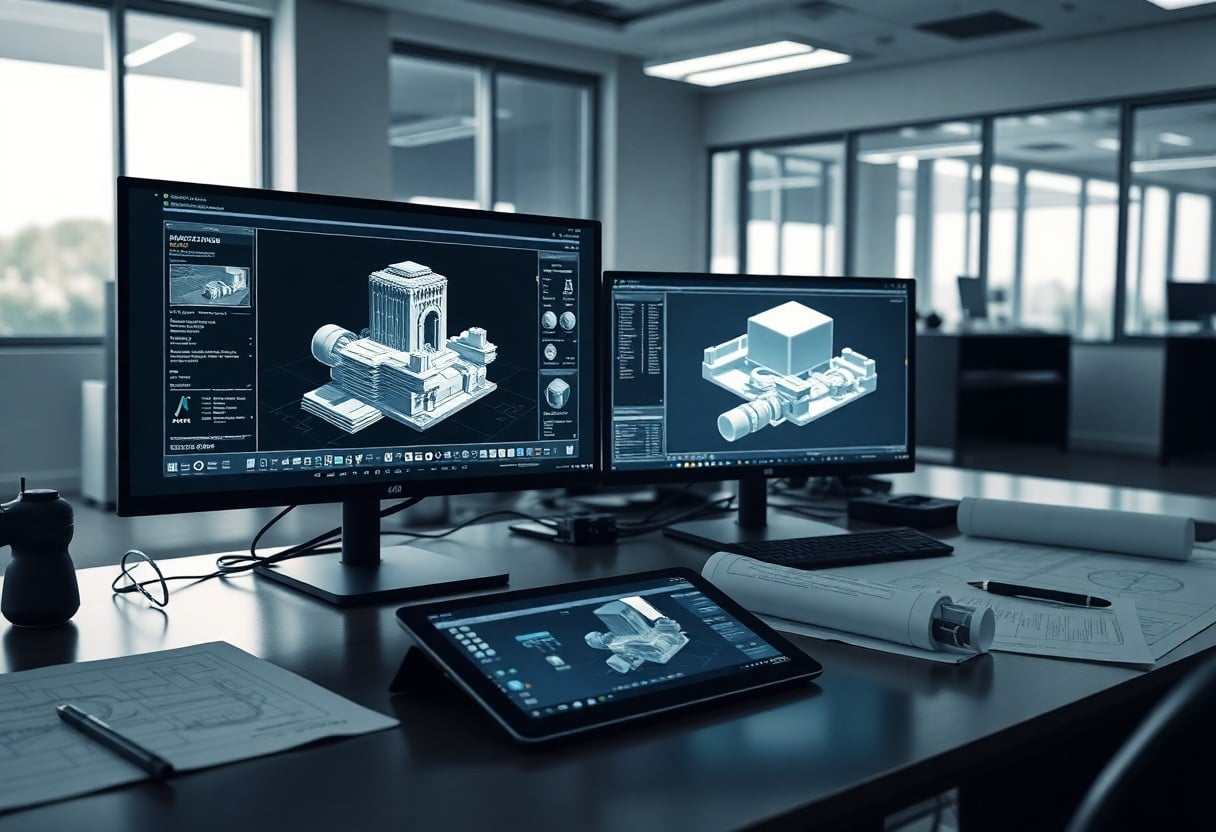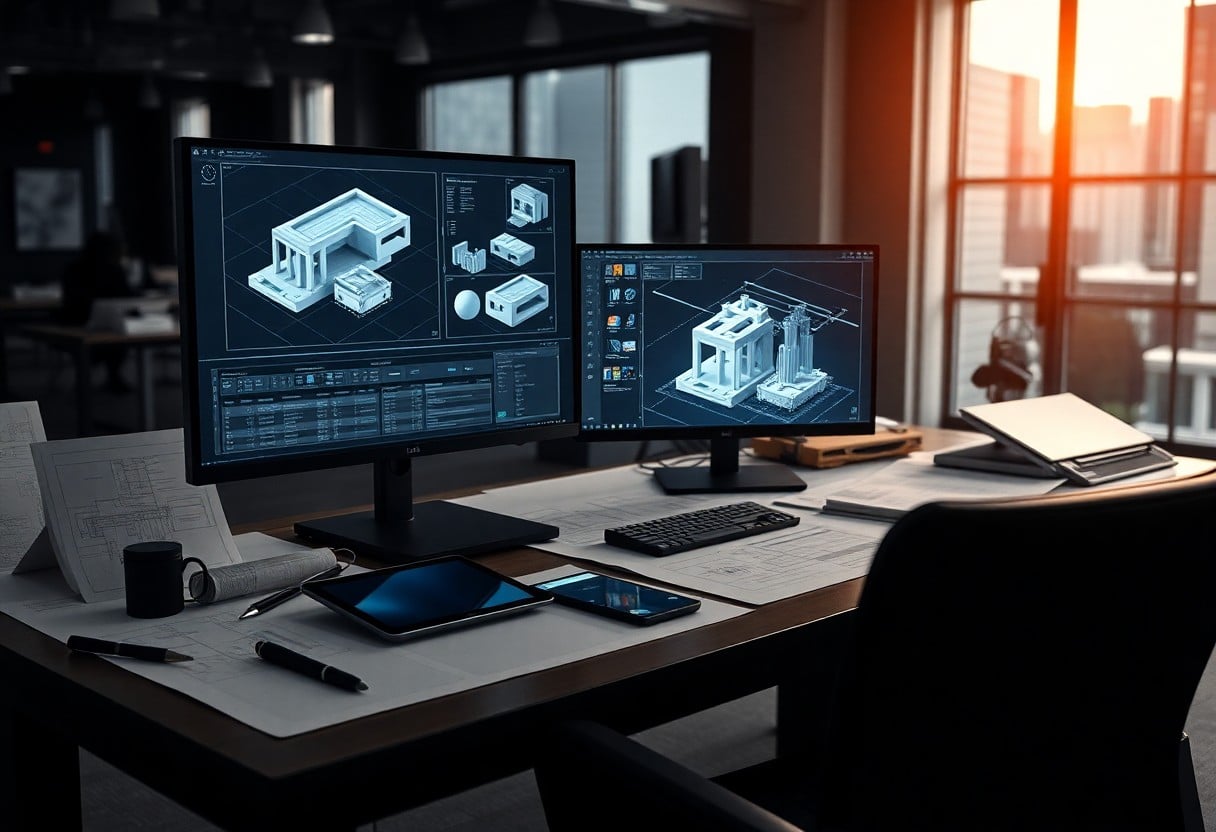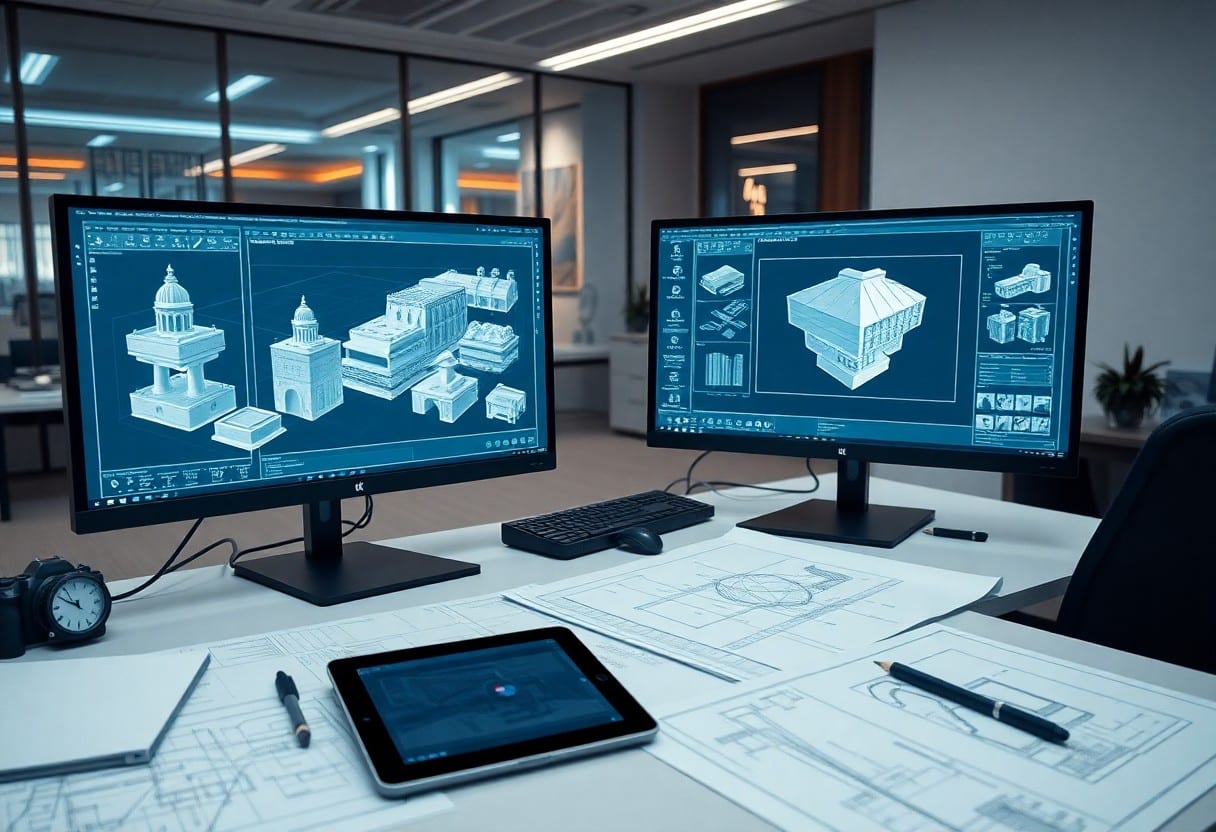Precision Creation - 8 Steps to Mastering the Latest CAD Tools
In today's design and engineering world, it's important to stay up-to-date with the latest CAD tools to increase your productivity. This article will guide you throughEight Key StepsThis will enable you to familiarize yourself with these tools so that you can create more precise artwork. Through these steps, you will learn how toEnhancement of design capabilityWhile avoiding common mistakes, make sure that your creative process is bothefficientlyboth... and...suretyThe

Key Points:
- Step One: Establish design goals to maintain creative clarity.
- Step Two: Choosing the right projectCAD toolsto increase efficiency.
- Step Three: grasp (often fig.)basic skillsThe Government should lay down a solid foundation for this.
- Step Four: unfamiliarLayer ManagementThe design process is simplified by the fact that it is a simple and efficient process.
- Step Five: Learn to useParametric Design, to increase flexibility.
- Step Six: proceedRegular Exerciseto enhance skill mastery.
- Step Seven: Community resources to share, seekfeedbackand opportunities for improvement.
Understanding CAD Tools
When learning about CAD tools, you will be confronted with a variety of software and features that can help you realize your design ideas and increase your productivity and efficiency. Mastering the use of these tools is essential for today's design professionals because they can accurately translate your ideas into concrete digital models.
CAD Software Overview
CAD (computer-aided design) software comes in a variety of models and versions, each with its own specific features. Common programs include AutoCAD, SolidWorks, and Revit, among others, which provide the tools you need to create, modify, and analyze design solutions.
Importance of precision engineering
Your design process must emphasizeprecision engineeringThis is because it not only affects the performance of the product, but is also directly related tosafetyrespond in singingfunctionalAccurate design helps to reduce errors and increase production. Accurate design helps to reduce error rates, increase throughput, and ensure that the final product meets design specifications and customer expectations.
The importance of precision engineering is not only reflected in the quality of your products, but also in your productivity and the trust of your customers. ThroughHigh level of precisionWith the help of our precision technology, you can create more competitive products and thus gain an edge in the marketplace. In addition, good precision improves safety in the production process and reduces accidents and losses. Therefore, investing in precise design tools and techniques will help your business grow and succeed.

Step 1: Setting Up Your Workspace
Before getting started with the latest CAD tools, you first need toSetting up your workspaceThis not only improves your productivity, but also gives you the best possible experience when designing. This not only increases your productivity, but also gives you the best possible experience when designing. Choose an interface layout that meets your design needs, and make sure frequently used tools are at your fingertips so you can focus on creating, not finding resources.
Configuration User Interface
You can optimize your design process by configuring the user interface. Select the tools and features you use most often and arrange them in easy-to-access locations to speed up your work. Quick access to each tool is the key to design efficiency.
Improve workflow efficiency
Implementing a few simple techniques can dramatically improve workflow efficiency. These include customizing shortcuts, setting up toolbars, and adjusting panel layouts. This allows you to quickly perform common actions without having to click through cumbersome menus.
In addition, the use ofTemplates and presetsIt can help you save a lot of time. When you create a new project, choose a template that meets your needs to get started quickly. With a well-designed workflow, you'll be able to focus on creative solutions instead of getting lost in the clutter. Ultimately, this will make your design process smoother and faster.
Step 2: Mastering Basic Drawing Techniques
The first step in improving your CAD skills is toMastery of basic drawing techniquesThese fundamentals are critical to your performance in the CAD environment. These fundamentals are critical to your performance in the CAD environment. Whether you are a beginner or an experienced user, familiarizing yourself withBasic sketching tools and techniquesare the keys to success. By utilizing these tips, you can create complex designs more efficiently. In this regard, consider usingWhat steps do I need to take to become compliant with drone registration?This will help you to be more efficient.
Basic Drawing Tools
To draw effectively in CAD, you need to familiarize yourself with some of theBasic Drawing ToolsThe following are some of the most common choices for beginners. For example, the Line, Circle, and Rectangle tools are the most common choices for beginners. The simple functions provided by these tools can help you quickly create basic shapes and lay the foundation for your designs. At the same time, understanding how to utilize these tools flexibly will make your design process more efficient.
Tips for accurate sketching
In making accurate sketches, the use ofProper TechniquesIt's important. Using the Grid and Align tools ensures that your design elements are neatly aligned and enhances the overall visual effect. In addition, mastering shortcut keys will give you more flexibility in the drawing process. Most importantly.Always check and calibrate your sketchesThis will significantly improve the accuracy of your mapping by avoiding any errors.

Step 3: Utilize advanced features
When it comes to mastering the latest CAD tools, the focus is on getting the most out of them.Advanced FeaturesThese features not only enhance your design efficiency, but are also key to creating great work with arrows. These features not only enhance your design efficiency, but they are also key to creating great work with arrows. In this section, we'll explore different advanced features to help you better understand how to apply these powerful tools.
- 3D modeling capabilities
- Customization Options
| Project | descriptive |
|---|---|
| 3D modeling capabilities | Create realistic designs with CAD's 3D modeling capabilities for improved visualization. |
| Customization Options | Flexibility to adjust design options to meet specific needs and enhance design customization. |
3D modeling capabilities
Through the use of CAD tools3D modeling capabilitiesThis allows you to create more complex and realistic designs. This not only brings a higher level of professionalism to your work, but also allows the client to understand the design intent more clearly. Not to be overlooked, 3D modeling can dramatically increase your flexibility and creativity in the design process.
Customization Options
CAD tools provide a wide range ofCustomization OptionsThese options allow you to customize your design to meet your specific design needs. These options can help you create something different and personalize your design. By utilizing these features, you can make your creative process more efficient and aesthetically pleasing.
For example, in the customization options, you can adjust the interface layout, shortcuts or toolbars according to your workflow needs. Such personalization not only saves you time, but also increases your productivity. Take advantage of theseCustomizationYou'll enjoy a smoother design experience where every idea can be realized with precision.
Step 4: Effective Measurement and Labeling
Effective measurement and annotation are critical when using CAD tools, not only to improve the accuracy of your design, but also to reduce the need for future revisions. Understanding the various measurement tools and annotation best practices can help you create more accurate drawings and designs. For more expertise you can refer toWhat factors affect your drone environment?
Precision Measurement Tools
Accurate measurement tools are an integral part of Carn's toolset, these tools help you obtain accurate dimensions and ensure that every detail of your design is to the desired standard. Proficient use of these tools will greatly enhance the accuracy and efficiency of your project during the design process.
Labeling Best Practices
To ensure that your design conveys the right information, theLabeling Best PracticesIt's important. Using consistent and clear labeling makes it easy for others to understand and copy your design.
When following labeling best practices, you need to focus onClarity, readabilityrespond in singingconsistency. Ensure that you use standard fonts and sizes, and keep your markings at an appropriate distance from the corresponding geometric shapes. Avoid overly complex symbols and always keep your drawings clean. This not only allows your designs to be interpreted accurately, but also demonstrates the maturity of your expertise.
Step 5: Working with Team Members
Effective collaboration is an important part of success when working with the latest CAD tools. By sharing design ideas and feedback with each other, you can improve the quality and efficiency of your projects. You can learn more tips on how to work with your team, such asEnhance Your Projects - Key Steps to Effective CAD Tool UtilizationThe design of the product is a very important part of the process, and it will help you to improve the accuracy of your design.
Share CAD files
Sharing CAD files is an essential part of the collaboration process. Ensuring that the files you use are in a format that can be easily opened by team members not only prevents misunderstandings, but also dramatically improves productivity.
Effective Communication Strategies
Effective communication strategies are crucial in teamwork. You should hold regular meetings where everyone can express their opinions and suggestions. Use digital communication tools to convey your ideas and design intent in a clear and organized manner.
Effective Communication StrategiesNot only does this include regular meetings, but you need to be able to continually follow up on team members' progress and issues. Use instant messaging software to ensure that issues are resolved quickly, and keep files up to date through a shared document platform. Remember, asking clear questions and giving constructive feedback are also key to fostering a good working atmosphere. This not only increases team motivation, but also leads to a more creative and efficient final product.
Create with Precision - 8 Steps to Mastering the Latest CAD Tools
After learning the latest CAD tools, you can improve your creative precision in these 8 steps. Mastering the functions and applications of each tool, combined with practice and reflection, can help you learn to be effective. As technology advances, you'll need to continually update your skills to ensure that you stand out in a competitive marketplace. Get started on your journey to precision!
Frequently Asked Questions
Q: What is "Create with Precision - 8 Steps to Mastering the Latest CAD Tools"?
A: "Create with Precision - 8 Steps to Mastering the Latest CAD Tools" is a specialized course for learning and mastering modern computer-aided design (CAD) tools, covering basic to advanced skills to help users improve design accuracy and efficiency.
Q: What background do I need to attend this program?
A: Although this course is very beginner friendly, it is desirable for participants to have some basic knowledge of design or related experience. If you are completely unfamiliar with CAD software, you are welcome to enroll and we will provide the necessary counseling and support.
Q: What are the key components of the program?
A: The course will cover eight major steps, including CAD software fundamentals, advanced design skills, project management, layout design, data analysis, interactive design and real-world case studies to help students fully grasp the application of the tool.
Q: What is the learning style of the program?
A: The course will be conducted through a combination of online instruction and hands-on practice, allowing students to learn and practice at any time, as well as participate in interactive discussions and feedback.
Q: What certificates or qualifications will I receive upon completion of the program?
A: Upon completion of the course, participants will receive a Certificate of Completion of Precision Creation, which will demonstrate your professional competence in the latest CAD tools and will be useful for future work or further study.
Q: Does the program provide technical support?
A: Yes, the program provides ongoing technical support during the learning process. Students can ask questions or request guidance from their instructors at any time to ensure that they are able to complete their learning tasks successfully.
Q: How do I enroll in this course?
A: Interested participants can visit our official website for more information and follow the instructions to fill in the enrollment form. Once enrollment is confirmed, further course details and related links will be sent to you.




